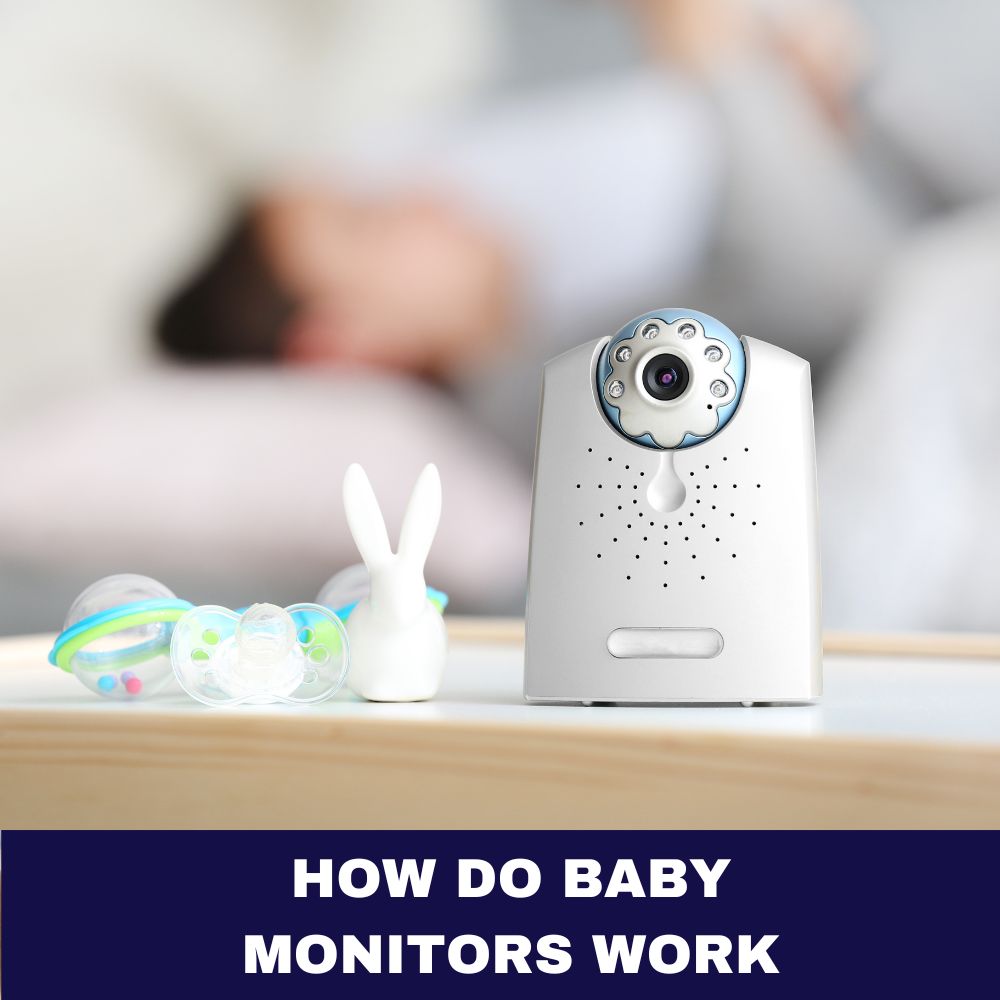As a parent of a toddler who struggles to fall asleep, I completely understand the frustration of spending over an hour trying all your usual tricks to get them to finally drift off. You do everything right – stick to consistent nap schedules, provide a relaxing bedtime routine, keep stimulation low – yet midnight creeps closer and your toddler still shows no signs of sleepiness.
When this happened to us, I desperately began searching for solutions. Why was our generally good sleeper suddenly taking forever to fall asleep? And what miracle fix would help them power down easier so we could all get some rest?
In this post, I’ll share what I uncovered about the common causes of toddler sleep struggles plus some simple, sanity-saving solutions you likely haven’t tried yet. While every child is different, using a combination of key environmental tweaks, dietary changes and sleep cues can work wonders helping toddlers fall asleep faster without as many tearful protests or middle-of-the-night wake ups.

Why Does My Toddler Take So Long to Fall Asleep?
In hunting down reasons why our toddler’s bedtime was becoming a drawn-out battle each night, I realized so much of it tied back to the tremendous cognitive, physiological and social development happening at this age. Their little bodies and minds are rapidly maturing, which understandably wreaks some havoc at times.
Some of the most common culprits of toddler sleep struggles include:
Hyperactive Minds: Between 18 months and 3 years, synapses and neural connections in toddler brains form quickly. With this cognitive growth comes constant curiosity about the world combined with higher energy levels that make powering down extra tricky close to bedtime.
Inconsistent Napping: Toddlers need consistency to thrive. An irregular nap schedule that changes in length or timing daily can confuse their circadian rhythm cues and prevent adequate sleep drive by bedtime.
Missing Bedtime Routine: Calming activities like baths or stories before bed help toddlers transition between high-energy playtime to sleep mode. Without these sleep associations, their bodies don’t know it’s time to start naturally producing melatonin.
Unaddressed Fears about Sleep: Many toddlers develop anxiety about separating from parents overnight or have nightmares/night terrors more frequently during light stages of sleep. Left unaddressed, these fears interfere with their ability to fall and stay asleep.
Physical Causes: Medical issues like acid reflux or food intolerances can create discomfort when lying flat making it hard for toddlers to get comfortable. Rule these out as well.
While completely normal for their age, allowing any of these issues to become an ongoing disruption can start impacting your toddler’s development and family life significantly. Let’s explore some tactics for troubleshooting what’s preventing them from easily falling asleep.
Why Getting Enough Sleep is Non-Negotiable for Toddlers
Before jumping into specific tricks, I want to reinforce why establishing healthy sleep habits at this young age is so critical beyond just making bedtimes easier. During toddlerhood the body grows rapidly and the brain is wiring itself at an incredible rate – laying the foundation for health, behavior and success later on.
Missing out on needed sleep during this explosive developmental window can have cascading effects like:
- Reduced Appetite: Too little sleep decreases levels of the hunger-regulating hormone ghrelin making toddlers less likely to eat enough during daytime meals.
- More Accident Proneness: Excessive drowsiness dulls their perception, coordination and reaction time increasing risk for falls or tumbles resulting in injury.
- Mood & Behavior Problems: Crankiness, tantrums, aggressiveness and hyperactivity skyrocket without adequate sleep recharging emotional control centers of the brain.
- Lower Immunity: Not getting enough sleep depletes proteins that activate the immune system leaving them constantly battling runny noses, chest colds and other bugs.
- Weight Gain: Ongoing loss of sleep tampers with metabolism and insulin sensitivity that when left unchecked early-on, elevates obesity risk later in childhood significantly.
In light of this laundry list of complications insufficient sleep creates during the toddler years, doing what it takes to ensure they get enough becomes imperative – even if that means adjusting your own bedtime or social life.
Prioritizing healthy sleep habits now also prevents much more challenging sleep problems as they get older. So be encouraged that the short-term struggle of helping a night owl toddler drift off sooner will have long-lasting dividends.
Next let’s unpack signs indicating your toddler isn’t getting enough Zzzs plus strategies you can start applying tonight for faster, frustration-free bedtimes.

Does Your Toddler Show These Signs of Needing More Sleep?
Rubbing their eyes or becoming manic late in the day offers obvious clues a fatigued toddler needs some shut eye. But pediatricians caution sleep deprivation symptoms can manifest in other subtle ways too:
- Dark Eye Circles: Chronic bluish tinting under eyes indicates constant tiredness.
- Overactivity: Ironically sleep deficit revs up neuroactivity so they seem “wired and tired” bouncing off the walls.
- Accident Prone: Clumsiness and coordination issues surface as drowsiness impairs motor skills and reaction time.
- Language Delays: Verbal skills lag without proper rest supporting cognitive development and information absorption.
- Weight Gain: As metabolism changes with restricted sleep, excess weight accumulates dangerously early on.
- Constant Illness: Missing sleep repeatedly tanks immune function leaving them constantly battling another cold.
- Attention/Focus Issues: Daydreaminess, distractibility and hyperactivity emerge with memory and concentration dampened by fatigue.
If you’re noticing 1 or more of these red flags lately, tap into the following tips for recalibrating their sleep schedule and environment so those symptoms resolve. Uninterrupted nighttime slumber plus a daytime nap provides the rejuvenation growing toddler minds and bodies need.
| Physical Signs | Behavioral Signs | Emotional Signs | Cognitive Signs |
|---|---|---|---|
| Dark circles under eyes | Hyperactivity/lack of focus | Moodiness/tantrums | Language delays |
| Clumsiness/lack of coordination | Accident proneness | Irritability/aggression | Memory lapses |
| Not growing properly | Fighting sleep at bedtime | Crying excessively | Difficulty learning patterns |
| Weight gain | Difficulty waking up | Poor listening comprehension | |
| Frequent illness | Difficulty following directions |
Design a Soothing Sleep Routine They’ll Look Forward To
As tempting as it is to rock an overtired toddler to sleep or let them fall asleep nursing/bottle feeding, allowing sleep crutches long-term makes it harder for them to self-soothe when waking between sleep cycles overnight.
Instead aim to establish a predictable 20 to 30 minute pre-bed routine so their body associates specific relaxing activities with sleep onset. This cues hormones to start increasing melatonin production and decreasing adrenaline naturally.
Make sure to keep TV, tablets and other electronics out of the equation during these activities as the LED light and mental stimulation they provide delays melatonin release for hours making it nearly impossible to quickly fall asleep afterward.
A sample bedtime routine might look like:
- 1 Hour Before Bed: Avoid sugary snacks, turn down lights and put away high-energy toys/games. Begin shifting focus to quiet play like coloring, puzzles or books.
- 30 Minutes Before: Start calming bedtime routine – take a warm (not hot) bath with lavender oil to prime sleepiness, then brush teeth and read 1-2 picture books together in dim light.
- Right Before Bed: With lights off carry them to bed avoiding any stimulus enroute. Briefly recap happy parts of the day & reassure them you’re close by if needed through the night. Leave some soft music playing and a protective nightlight if it comforts them.
- Middle of the Night Wakings: Respond minimally when they call out – offer a gentle pat on the back and remind them they’re ok rather than turning all lights on or removing them from the crib which further wakes them up. Don’t give treats or play into requests after bedtime.
Aim to follow this sequence consistently even on weekends so their internal clock locks in to expect sleep at about the same times nightly. Pay attention to how long it takes from starting the routine to them actually falling asleep – the whole process should take under an hour total.
If you notice bedtime dragging out longer or they start stalling on elements like tooth brushing, try gradually adjusting the routine 15 minutes earlier until you pinpoint their optimal sleepiness window.
| Completed | Task | Purpose |
|---|---|---|
| Keep room cool, quiet and dark | Preps circadian rhythm for sleep | |
| Warm bath with gentle scent | Relaxes muscles and primes drowsiness | |
| PJs, brush teeth and potty break | Clears any distractions before bed | |
| 2 slow, calm stories | Transitions mind for sleep | |
| Comfort object (stuffy, blankie) | Eases separation anxiety | |
| Gentle good night check-in | Reassures before you leave room | |
| White noise and night light | Drowns disruptions and fears | |
| Follow wake up routine | Promotes self-soothing back to sleep |

Adjust Daytime Naps So They Don’t Undermine Bedtime
Given the direct impact daylight has on regulating our circadian rhythm and drowsiness, it’s not surprising daytime napping habits influence nighttime sleep readiness too.
While some toddlers can smoothly transition between 1 long daytime nap close to bedtime, sleep experts caution this late-day snooze often backfires. That several hours of deep non-REM sleep tanks their sleep drive come actual bedtime.
Instead, consider limiting total nap time to about 1 to 2 hours divided between a shorter mid-morning refresher and secondary 20-minute power nap 4+ hours before bed.
Cutting out that lengthier afternoon nap altogether for a few nights can reset the sleep schedule pretty quickly if you’re crunched for time.
Just closely monitor resulting grumpiness and be ready to intervene with an optional catnap if their mood and behavior seem unmanageable without one.
Occasionally letting them fall asleep in the car later in the day won’t do much harm. But allowing a daily off-schedule nap habit certainly can. So try to keep nap times consistent even on weekends.
Optimize Their Bedroom Setup For Faster Sleep Onset
Even if you stick to a solid bedtime routine every night, an uncomfortable sleep environment can still sabotage your sleepy toddler’s ability to swiftly nod off.
Evaluate the bedroom setup and tweak these common sensory distractions that keep restless minds activated longer:
Temperature: Cooler is better for sleep. Thermostat set at 65-70 degrees makes it easier to snuggle under blankets so aim for the low end of that range.
Sound: White noise machines help dampen unpredictable background noises allowing their brain to ignore auditory stimulation. Let them pick soothing sounds like rain or ocean waves to play each night.
Light: Ensure window coverings completely black out ambient light from the street or backyard playing on their face. Use dimmable lamp options and position nightlights out of eye sight behind furniture.
Additionally provide multiple soft, cozy blankets and a favorite stuffed animal that they psychologically associate with bedtime as part of their sleep nest. Kids often create attachments to “lovey” items that provide a sense of comfort and familiarity that aids the transition to sleep.
With a dark, quiet space kept at an optimal cool temperature plus their own makeshift cocoon, falling asleep swiftly goes from struggle to luxury your toddler will quickly learn to crave every evening. Who knows, you may catch them fake yawning at 6 pm eager to get the bedtime train moving!

Cut Off Caffeine and Heavy Foods Hours Before Bed
What toddlers ingest throughout the day impacts their ability to fall asleep easier or not. But parents often overlook dietary stimulants sabotaging bedtime until it’s too late.
Caffeine, refined sugar and heavy foods burden tiny digestive systems triggering physical discomfort plus amped energy levels when what you want is the opposite effect.
Limit the following within 4 hours of their bedtime target:
- Sweets like candy, chocolate, cookies and desserts
- Starchy carbs like pasta, pizza, rice or bread
- Sugary juices or sodas
- Dairy foods like cheese, yogurt, or ice cream
- Acidic fruits like citrus or berries
- Fried snacks like chips or french fries
- Caffeine via soda, tea, or chocolate
Instead offer lighter proteins, veggies or wholegrains like turkey sandwiches, eggs, baked chicken, steamed broccoli, avocado slices, hummus and crackers or banana with almond butter earlier in the evening.
Note other symptom flare ups tied to common food intolerances too like tummy aches, congestion or headaches that disrupt sleep. Keeping an evening food diary can help identify which items to specifically limit.
Soothe Them with Calming Music, Stories and Night Lights
Incorporating pacifying ambient sounds, night lights and bedtime stories into the pre-sleep routine works wonders calming racing toddler minds. The predictability of these sleep associations double as mental cues that bedtime unwinding has begun.
Benefits of Soothing Music
Playing softly crescendoing classical or lullaby playlists provides a masking “white noise” effect that dampens disruptive background sounds letting their brain ignore random noise.
Stretch this concept further by creating DIY “sound spas” like placing a floor fan or small noise machine across the room or inside a closet to generate soothing, consistent white noise all night long.
Pre-Sleep Audiobooks
Listening to a narrated children’s book or kid-friendly mindfulness meditation as they nestle into bed distracts active minds from the usual separation or darkness fears that stall sleep.
Calm storylines with happy endings reassure them and model self-soothing thoughts they can recall later if they happen to wake up.
Gradually reduce narration time every few nights until they no longer “need” a full story to fall asleep yet keep books handy to flip through quietly if they call out requesting one.
Night Lights
While complete darkness helps increase melatonin for sleep, forcing too-bright overhead lights off can be scary for toddlers. Using a plug-in amber night light facing away from the crib or a hallway light left on with their door ajar provides just enough exposure for them to distinguish comforting shapes and shadows without stimulating brain activity.
Again over time gradually dim and re-position night lights further away to encourage comfort with minimal lighting. But allow them initially if it prevents bedtime battles.

When To Seek Medical Advice About Serious Sleep Problems
While there are plenty of straightforward hacks you can try at home to help extended sleep latency in toddlers, some issues do warrant a visit to your pediatrician or sleep specialist.
Red flag symptoms that suggest an underlying condition contributing to sleep struggles include:
- Snoring loudly or making gasping noises while sleeping
- Chronic night waking that leaves them fully alert for long intervals
- Tossing and turning relentlessly before falling asleep or frequent body jerking movements all night
- Unusually difficult to rouse in the morning after 10+ hours sleep
- Leg cramps or growing pains that wake them up frequently
Documenting these behaviors helps doctors pinpoint causes like sleep disordered breathing (like sleep apnea), restless leg syndrome or night terrors that require specific medical treatment alongside sleep training modifications to overcome.
Bottom line – trust your instincts if something seems off about their sleep quality or habits. Bringing up concerns promptly leads to faster resolution so they sleep soundly through the night consistently.
Establishing Healthy Sleep Now Prevents Problems Down The Road
Like any skill, learning to fall asleep independently takes time and consistency for toddlers to master. But setting these fundamental habits early-on makes maintaining healthy sleep so much easier as demands on their schedule and biological clock increase later in childhood.
While occasionally hitting sleep obstacles is normal, armed with the right tools to identify factors interfering with good rest quickly gets things back on track.
Stick with the tweaks highlighted here for 2 to 3 weeks to notice if sleep onset and duration improves. Keep fine tuning elements that work until you nail the exact pre-bedtime flow that has your toddler looking forward to tucking into their sleep nest at about the same time every night.
Sweet dreams!
FAQ – Toddler Takes an Hour to Fall Asleep
Why does my toddler stall or take a long time falling asleep even when they seem tired?
There are a few common reasons for this. Overtiredness can paradoxically manifest as hyperactivity making settling down difficult. An inconsistent nap schedule may disrupt their circadian rhythm. Lack of calming pre-bed routines misses cues for sleep onset. Stimulants like light, noise or caffeine later in the day can delay sleepiness. Anxiety, nightmares or discomfort can also interfere with swiftly falling asleep
How much sleep on average does my toddler need daily?
Experts recommend toddlers age 1-3 get about 11-14 hours of nightly sleep plus a 1-2 hour daytime nap. Amount can vary slightly by age and personality. Key is ensuring their night sleep is continuous, restful and allows natural wakeups between cycles. Disruptions lead to daytime exhaustion. Monitor symptoms like hyperactivity, weight gain and illness as red flags they aren’t getting enough sleep.
What should I do when my toddler keeps getting out of bed at night or waking for long periods?
First assure they don’t need anything urgent like water, a diaper change or comforting from pain. Then swiftly but gently return them to bed with minimum interaction to teach sleep independence. Let them know in simple terms you hear their calls but won’t engage until morning time. Reward staying in their own bed until a reasonable wakeup time with praise and an exciting activity in the morning.
How do I transition my toddler from nursing/rocking to sleep to self-soothing without too many tears?
Gradually institute parts of a calming bedtime routine that don’t involve you physically putting them to sleep. Add elements like bath time and stories so they learn to unwind without the sleep crutch first. Then establish a designated music/nightlight sleep cue. Tell them you will sit next to their bed as they drift off. Over subsequent nights, move farther away until they can fall asleep solo. Offer comfort like verbal reassurance if needed and gradually fade that too.
What should I do if frequent night wakings or difficulty falling asleep persist beyond a few weeks?
If sleep struggles become an ongoing issue alongside concerning symptoms like snoring or lack of growth, seek your pediatrician’s advice to identify potential medical issues interfering with sleep like reflux, sleep disordered breathing, restless leg syndrome or night terrors that may require treatment alongside continued sleep training adjustments. Keep notes on behaviors and sleep patterns to best highlight the problems at your visit.












